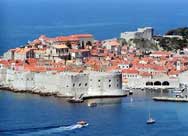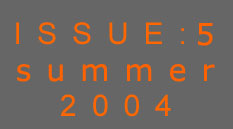
Dubrovnik, May 17, 2004
Speech by ENS President Bertrand Barré
The Future of the European Nuclear Industry
|

Bertrand Barré
|
Dear Colleagues,
ENS, as you know, has always pioneered Europe’s
enlargement. The European Union reached 25 members this
month, and I have no doubt that Croatia will join in the
near future. However all new entrants to the European
Union were part of ENS long before accession, and also
non-European Union countries, including Russia and Israel
are among our member societies…
|
I really believe the times are propitious for nuclear
power. The price of a barrel of crude oil has hit the $40 mark
once again: it may be temporary, but more and more reputable geologists
predict that world oil production is going to peak within 10 to
15 years. It should be a rather flat peak, followed by a very
slow decrease, but this would create an enormous pressure on natural
gas, the most likely substitute to oil and presently nuclear power’s
fiercest competitor. There is no predicting what the prices of
oil and gas will be in the next 2 decades.

By contrast, we know that the costs of nuclear power will remain
very stable, as they hardly depend upon the prices of the resources.
Uranium accounts for less than 7% of the total kWh cost, versus
more than 60% for gas. But even if the big oil and gas crisis
is farther away than I believe, we are facing a major dilemma
today:
-
We need more energy for the developing world, including
such giants as China, India and Brazil. We should not forget
that some 2 billion people currently have no access to electricity.
Furthermore, the 6 billion people inhabiting the Earth today
will rise to 9 billion around the year 2050.
-
There is a clear and urgent need to cut our emissions of
greenhouse effect gases (GHG); mostly, but not only carbon
dioxide. In a mere half-century, we have already doubled the
maximum CO2 level ever known to man before in our atmosphere.
This is a documented scientific fact, covering a period of
600 000 years.
-
Out of the 10 billion tons of equivalent oil we consume
each year, 80% actually comes from the combustion of fossil
fuels, which constitutes the main source of anthropogenic
CO2 releases to the atmosphere.
Solving this triple equation may be the toughest challenge we
must meet in this half century:
-
It is a formidable challenge even with a significant increase
in the share of nuclear power, which supplies today less than
7% of the world’s primary energy;
-
It would be an almost impossible challenge without nuclear
power.
But, fortunately, the general atmosphere is improving on the
nuclear scene:
-
Asia forges on with its programs (Japan, South Korea, China,
India, Taiwan…)
-
In the USA, where utilities are rushing to obtain the authorization
to extend the lifetime of their existing reactors, there are
signs that new orders might not be too far away.
-
The Russian Federation is awakening from the hibernation
that followed the Chernobyl accident and the breakup of the
Soviet Union.
-
Europe alone keeps sending conflicting signals, however,
the most recent are positive. In Switzerland, two antinuclear
referendums were comfortably defeated. Preliminary works have
started on the Olkiluoto site in Finland, where the European
Pressurized water Reactor EPR supplied to TVO by AREVA and
Siemens will be built (I was there last week, and it is indeed
heartening to again witness an active nuclear construction
site in Europe). Also, the French Prime Minister announced
last month that the government will authorize EDF to order
another EPR to be built in France very soon.
There is no doubt that big nuclear plants, such as the EPR or
ABWR, promise competitive production of baseload power, and are
much more predictable than their fossil competitors. However,
what about smaller plants for smaller grids? Can smaller plants
be competitive for electric power alone? Are the prospects better
for combined heat and power, or desalination and power? Honestly
said, the jury is still out. This is why today’s conference
“Nuclear Option in Countries with Small and Medium Electricity
Grids” is very interesting. It should shed a useful light
on a very topical issue.
Looking further into the future, in the framework of Generation
IV and INPRO, specialists are trying to identify or design better
nuclear systems for future decades. Revisiting the breeder options
for sustainable generation, considering hydrogen production to
access the transportation sector without GHG emissions, etc.
Nuclear power is just 50 years old, as we shall celebrate next
July in Obninsk. It is therefore a very young technology with
a bright future if we, fellow nuclear scientists and engineers,
make it happen together. |







